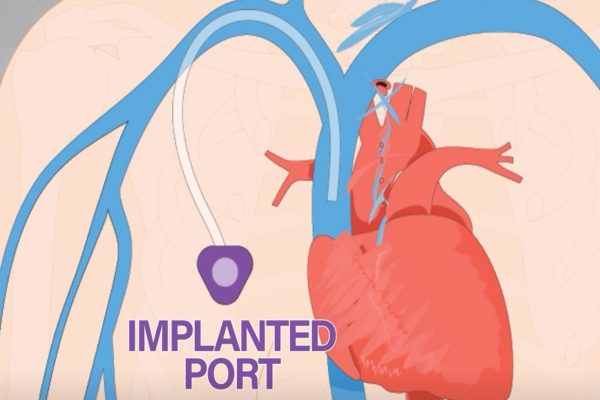After you arrive for your appointment, you will be escorted to a procedure room, where you will be asked to change into a gown. A small tube (IV) will be placed in your arm so that pain medicine and medicine to help you relax can be administered during the procedure. You will be positioned on an exam table. The procedure is performed by a team including an Interventional Radiologist, nurse and technologist trained in this procedure. Our nurse will place electrodes (wires) for a heart monitor (ECG) on you, and a blood pressure cuff will be wrapped around your arm; these will stay in place throughout the procedure. You will be given sedation for relaxation and discomfort, but you will be conscious during the procedure. This is known as conscious sedation.
Your skin will be cleaned with a germ-killing liquid. Sterile blue sheets will be placed over you; to keep these sheets germfree, you will be asked not to touch them. Some numbing medicine will be injected in the skin over the chest area that will be used for the port placement. The chest port will be inserted under the skin through a small incision. The incision is closed with stiches and steri-strips. The device will be flushed with a heparin solution (blood thinner to prevent blockage of the catheter) and covered with a sterile bandage. To assist with proper location of the catheter, x-ray contrast (dye) may be injected through the catheter and x-ray pictures taken when the dye is injected, you may feel a warm sensation or a metallic taste in your mouth, but this is harmless and will only last a few seconds. You may be asked to hold your breath for several seconds as these pictures are taken. A final x-ray picture will be taken to confirm the placement of the chest port device.
Most patients feel little or no discomfort during this procedure. After being monitored for a short time, you will be released with discharge instructions. The entire procedure usually takes about 1 ½ -2 hours.
For your safety and the protection of others, we do not allow anyone other than patients in our exam rooms.

